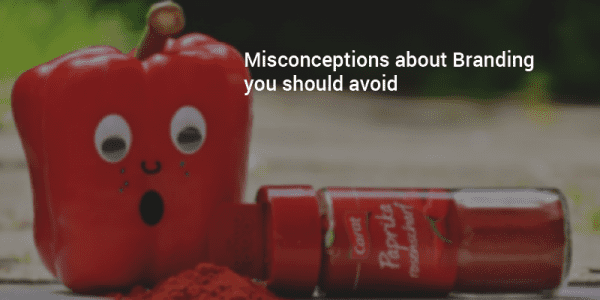6 Misconceptions to Avoid for Branding

Branding is a powerful tool when used correctly
Branding is known to be an ambiguous field to many, especially those who have only heard of it. In its simplest form, branding is a process of defining your company’s uniqueness, and marketing that uniqueness in a way that appeals to your target audience.
Branding, when done right, can help achieve steady growth and strengthen your company’s position for long-term sustainability. But first, it is best to know the misconceptions about branding so you can avoid them completely.
1. A logo is branding
A lot of companies believe that branding is all about the logo and its placement in their products or services. Some common things branding clients are known to ask is “I would like to do branding, can you redesign my logo?” It is honestly by no fault of their own. Many branding companies who claim to do branding, only focus on creating logos and collaterals. This creates confusion about what branding actually is.
Logos are actually visuals or icons that identify a company’s brand – essential no doubt but it is only one of the many facets of the complex world of branding. Branding is weaved into everything that a company does. From the beliefs that started the company down to delivering on the promises that you assure customers when they buy your product. The logo is just a piece of the puzzle.
2. Branding is for Big Companies
Search on Google about branding and you are bound to find examples on multinational companies about their branding endeavours. News and articles about these giant brands are easily found because they have a lot of media coverage. As such it is expected that they appear in our news feeds. That does not mean that the smaller ones like us do not need or do branding.
MNCs put their resources into branding to maintain their market position and to find room for growth. Similarly, small companies also need branding to do the same – the difference is in the complexity and scale of it.
When large companies do branding, it takes a considerable amount of resources and coordination. They have to ensure consistency throughout their subsidiaries, not to mention the perception of their brand across diverse cultures in every country. Small businesses require a much smaller budget and can get a branding exercise done in a shorter timeframe.
3. Branding is purely visual
Yes, aesthetics and pretty visuals are key factors in great branding but as we have said previously, branding is much more complex than people think. A messy organisation or bad customer experience will affect your branding and no number of visuals can help with that.
Branding, as a whole, is meant to provide clarity for the business and distinctiveness among other businesses. It is like choosing what type of car your brand is, a luxury (premium), SUV (adventurous) or minivan (family).

Once again, branding only works when all the gears that run the company are in check. There is no point in having a shiny exterior if you do not have a running engine.
4. Branding is a one-time deal
This is far from the truth, branding is plural and with good reason. If you have had the success of great branding at the start, congratulations but do not get complacent. Companies need to reassess their brand from time-to-time to make sure it is updated to the modern consumer. What may have worked previously is not guaranteed to work tomorrow.
If you decide that a rebrand is in order, it does not mean taking apart your brand and changing its foundation. Sometimes, all you need is a fresh coat of paint – an updated look for your brand which involves minuscule changes. Small but it may make all the difference. Just look at Coca-Cola.

5. Marketing and branding are the same
An all-time misconception is that marketing and branding are the same. The reason why people get confused is that they are interconnected. You can not have successful marketing without great advertisements and a solid brand. In other words, you can not achieve one without the other doing its job.
The main difference is that marketing and advertising can provide more measurable outcomes and are more specific in nature whereas branding is more of an internal compass that is projected through marketing. The internal compass reflects everything about the company’s culture. For small businesses, your boss is the driver for your brand. Branding requires marketing to nurture the relationship between the brand and the customer.
A brand identity is what guides marketing to know exactly how to do its job which is to well, market the brand.
6. Branding is not necessary
Many successful company owners, particularly small business owners believe that product, service and price are the true determinants of the company’s success. It is no surprise when they find sales stagnant or decreasing despite not having done any changes to their business model since the beginning.
Consumer behaviour has the missing ingredient. Consumers make their decisions primarily based on emotion (Archar 2016). The only logical reasoning is our minds trying to rationalise why we made that decision to buy. Everyone is a victim of that, including me and you. But here’s where branding takes the reigns.
Your branding is the bridge that helps evoke the right emotions that persuade customers to choose you, over competitors. That emotional decision either gives you a sale or a lost customer.